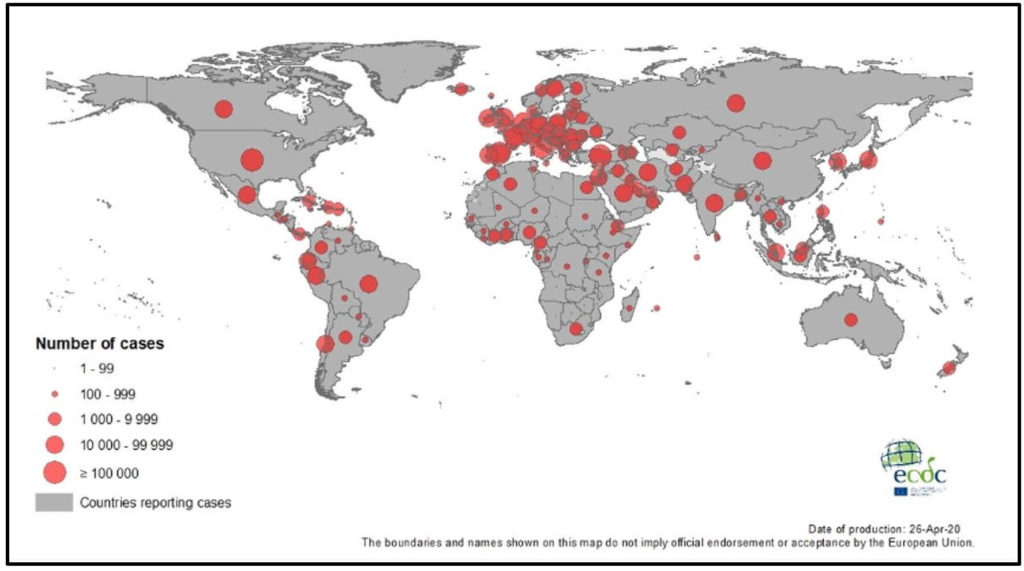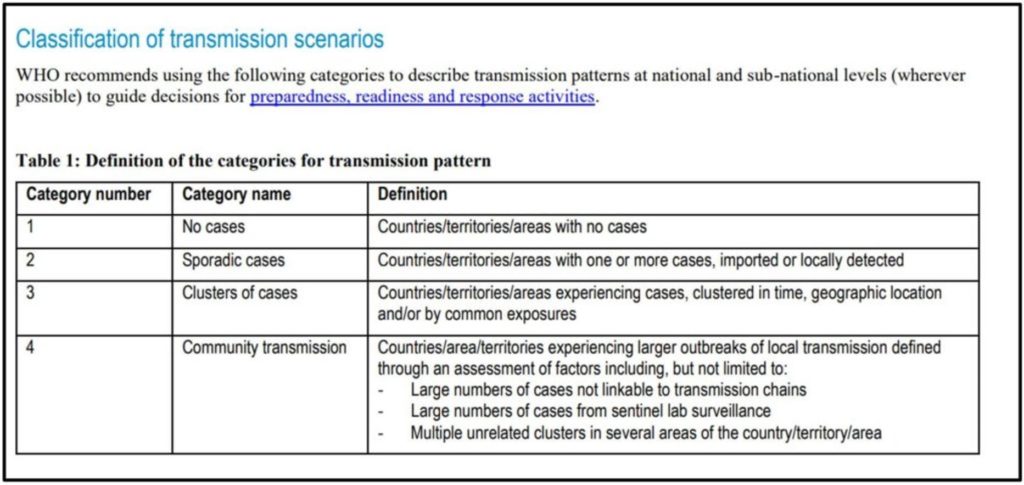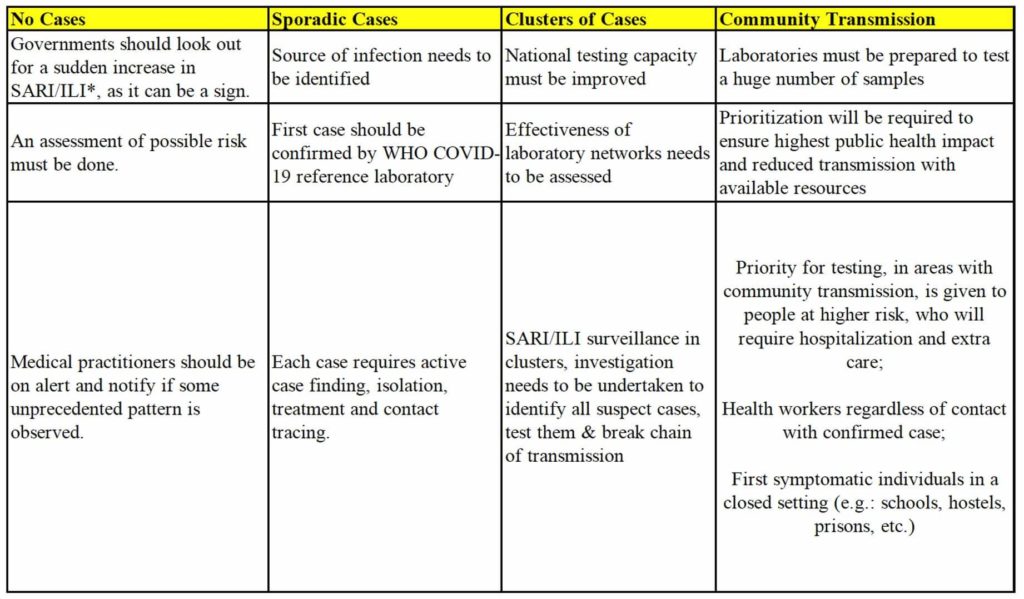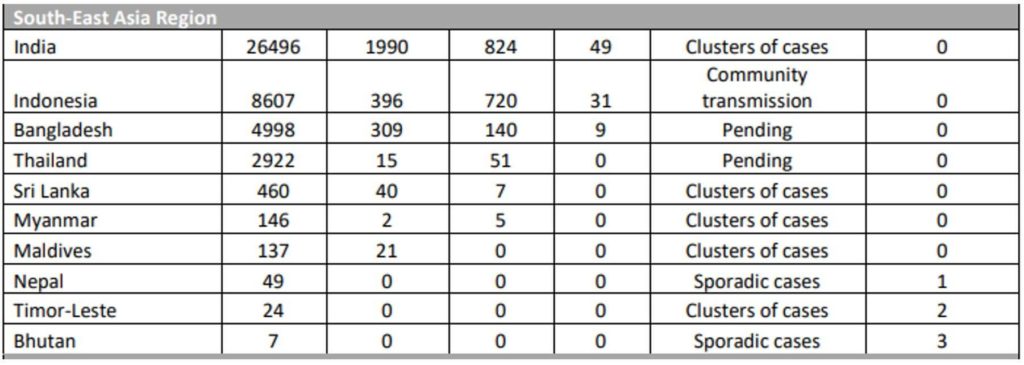Testing the right set of people seems to be one of the effective ways of identifying COVID-19 spread. However, different countries follow different testing strategies. Here is a look at the testing strategy of various countries.
As COVID-19 is spreads rapidly across the globe, scientists, healthcare workers, and governments are working together to delay, contain, and stop the spread of the virus. Despite all these efforts, number of cases reported globally is getting closer to 29 lakhs. The number of lives claimed by the virus has also crossed the 2 lakh mark and this continues to rise. One of the key efforts of the global effort has been effective testing. But what is the testing strategy being followed around the world? Here is an explainer.

WHO has stressed on widespread testing in all countries
The Director- General of the World Health Organization (WHO) has repeatedly emphasised on the need for rigorous testing of persons. Every country must detect, test, isolate, and care for every case, and trace contacts. Increased testing will give insights into the extent of infection in the population and how it is evolving. This will also help the governments make decisions based on real evidence.
It is now known that the virus is highly contagious. Research is still ongoing to know more about the virus- its origin, nature, and structure, which will aid in development of vaccine. (Factly has already written an article on the important research studies pertaining to COVID-19, undertaken in India.) Thus, the best way to confront the infection now identifying all active cases, their diagnosis, isolation, and treatment.
Even though the WHO has chalked out recommendations on testing strategy to be followed by countries based on the level of transmission, the strategy adopted by different countries is varied due to multiple factors such as trend within regions, availability of resources, existent healthcare system, and availability of tests and kits. This story explores the different strategies for testing adopted by some major countries.
WHO has categorized countries into four groups of transmission level
Laboratory testing strategy recommendations for COVID -19 released by WHO on 21 March 2020 has listed out recommendations depending on the level of transmission in the region. The four categories of transmission described by WHO are:
- No cases – When there are no cases within an area/territory/country
- Sporadic cases – When one or more cases are imported or locally detected in an area/territory/country
- Clusters of cases – Cases in countries which are congregated in time, geographical location, or have had common exposure in an area/territory/country
- Community transmission – When there are large number of cases being reported but source of virus cannot be traced. That is, how the people contacted the virus cannot be identified since they neither have any travel history nor have had contact with a positive case.

On the basis of transmission level, WHO has recommended appropriate testing strategy
In the following table, WHO’s recommendations regarding testing strategy have been summarized.
In all the categories, testing of all suspect cases is mandatory. Suspect cases are defined by WHO as a patient with acute respiratory illness such as fever and cough/difficulty in breathing/ any other symptom of respiratory disease, who
- Has a history of travel to COVID-19 affected countries during the 14 days prior to onset of symptoms, OR
- Has had contact with a person with the infection, OR
- Requires hospitalization due to the conditions AND alternative diagnosis is absent.

- SARI – Severe Acute Respiratory Illness
- ILI – Influenza Like Illness
The WHO has also mentioned that not having laboratory confirmed cases need not suggest that the country is free from COVID-19. It can also be because of insufficient testing.
Latest situation report shows India is at the ‘Clusters of Cases’ stage
As per the latest Situation Report on COVID-19 released by WHO on 26 April 2020, India is in the stage of ‘Clusters of Cases’. As of 8AM on 27 April 2020, India had tested 6,65,819 samples and 27,891 individuals were found to be positive, as per data released by the Ministry of Health & Family Welfare (MoHFW). The WHO report of 26 April 2020 shows 26496 cases for India.

In the following section, the strategies adopted by different countries have been discussed.
India
ICMR’s testing strategy for India released on 09 April 2020 requires testing of following symptomatic individuals:
- Those who have a history of international travel in last two weeks
- Those who contacted a laboratory confirmed case
- Are healthcare workers
In addition, all patients with SARI should be tested ( with fever AND cough and/or shortness of breath). Between 5 to 14 days of contact with a confirmed case, all asymptomatic direct contacts and high-risk contacts must be tested. Symptomatic ILI patients identified in clusters/hotspots should also be tested.
China
China notified WHO about the epidemic on 03 January 2020. Since the initial cases were reported in Wuhan and parts of Hubei provinces, efforts were made to prevent the transmission of virus to other places. According to WHO’s study, in this first stage, China worked on controlling the source of infection, block transmission and prevent it from spreading further. During the second stage, China’s aim was to reduce the intensity of the epidemic and slow down the increase in cases. The infection was classified as Class B infectious disease. In the third stage, China worked towards reducing clusters through epidemic prevention and control.
China’s testing strategy involved collection of samples from suspected COVID-19 cases and from those who require diagnosis/ differential diagnosis for the virus. Specimens were collected from those admitted in hospitals and, from their close contacts. As per WHO’s classification, China is still in the ‘Clusters of Cases’ category.
United States of America
According to CDC, in USA, priority for testing has been given in three levels. Those with mild illnesses and can recover at home need not get themselves tested. WHO’s classification shows USA is in the community transmission level.
Priority 1: Hospitalized patients and health care facility workers with symptoms
Priority 2: Symptomatic patients
- in long- term care facilities
- above 64 years of age
- with underlying health conditions
- first responders
Priority 3: Those individuals possessing symptoms but do not fall in the above categories including critical infrastructural workers with symptoms, health care facility workers and first responders, and individuals with mild symptoms in hotspots.
Europe
In EU’s recommendations on testing strategies, the member states were instructed to prioritize testing like in India and USA. The five levels of priority in the decreasing order are:
Priority 1: Patients hospitalized with SARI
Priority 2: Any case of Acute Respiratory Infection in health care facilities and symptomatic health care staff
Priority 3: Patients with Acute Respiratory Infection or ILI in sentinel outpatient clinics and patients admitted to sentinel hospitals with SARI.
Priority 4: Elderly people with underlying chronic health conditions and vulnerable populations
Priority 5: All patients with respiratory infections, traced contacts, and asymptomatic patients
In UK, the government claimed that it had undertaken one of the highest number of tests in Europe. Germany has a higher testing rate than UK and has been lauded for its efforts. UK had doubled testing from 5000 to 10,000 per day. Italy, which is an epicentre of the pandemic, between 24 February and 10 April 2020, more than 9 lakh tests (around 25,000 to 35, 000 per day) were conducted. Italy had around 1.5 lakh confirmed cases. Italy, Germany, and UK are in the community transmission level.
Australia
Like India, Australia mandatorily tests symptomatic individuals who have a travel history in last 14 days, health care workers, or have lived in area of high risk. Those hospitalized for respiratory symptoms or fever without any specific cause for symptoms are also tested. Australia is also in the category of ‘Clusters of Cases’.
South Korea and New Zealand have managed to ‘flatten the curve’
New Zealand, South Korea, Iceland, and Germany have been praised by media for their effective measures to contain the disease. New Zealand has announced that community transmission has stopped and is all set to ease the lockdown. Even South Korea has now started reporting only single digit number of new cases. Reports suggest that Germany has conducted more than 1 lakh tests per day. What is evident from these reports is that some countries have conducted widespread testing as an effort towards flattening the curve.
Featured Image: COVID-19 testing strategy



1 Comment
Pingback: Data: COVID-19 cases in India in Numbers